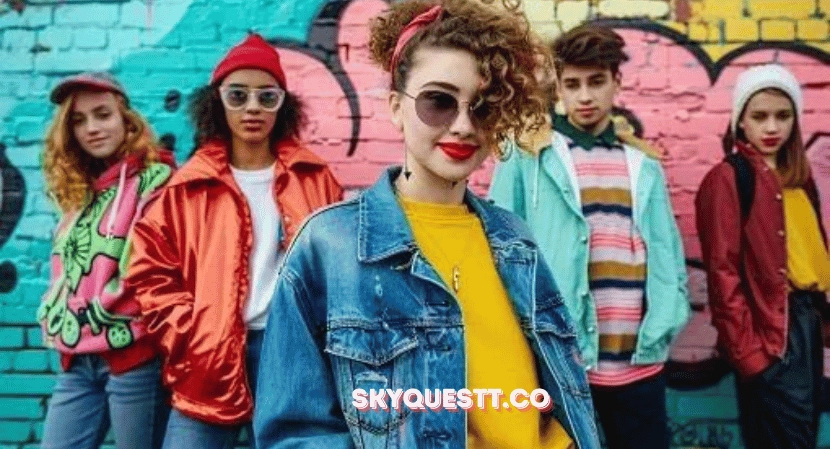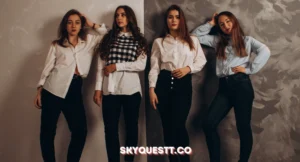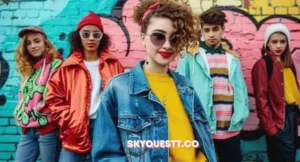
Street style has become a defining aspect of modern fashion, reflecting cultural shifts, social movements, and the ever-changing tastes of individuals. Emerging as a form of self-expression, street style has evolved dramatically from the 1990s to today. This article explores the transformation of street style over the decades, examining its origins, influences, and the current trends shaping this vibrant fashion phenomenon.
The Roots of Street Style in the 90s
The 1990s marked a pivotal moment for street style, with various subcultures influencing fashion. The decade saw the rise of grunge, hip-hop, and skate culture, each contributing distinct elements to the streetwear aesthetic.
Grunge
Originating from the Pacific Northwest music scene, grunge became synonymous with bands like Nirvana and Pearl Jam. This movement favored a laid-back, rebellious look characterized by oversized flannel shirts, ripped jeans, and combat boots. Grunge style was an expression of disillusionment with mainstream culture, reflecting a desire for authenticity over polish. Iconic figures like Kurt Cobain embodied this style, influencing countless young people to embrace a more casual, anti-fashion approach.
Hip-Hop
Simultaneously, hip-hop culture was making waves in urban fashion. Artists like Run-DMC and A Tribe Called Quest popularized baggy clothing, bold colors, and accessories like gold chains and snapback caps. Tracksuits, basketball jerseys, and high-top sneakers became staples of the hip-hop wardrobe, signaling a cultural shift towards athleticism and street-savvy aesthetics. The connection between hip-hop and fashion deepened as brands like Adidas and Nike aligned themselves with the music scene, creating a powerful synergy that would shape the industry for decades.
Skate Culture
Skate culture also played a crucial role in shaping 90s street style. Brands like Vans and Thrasher became synonymous with the skateboarding lifestyle, promoting a look defined by loose-fitting jeans, graphic tees, and skate shoes. The DIY ethos of skate culture encouraged individuality and creativity, inspiring young people to personalize their outfits with patches, pins, and unique accessories.
The 2000s: A Blend of Influences
As the 90s faded into the 2000s, street style began to evolve, blending influences from various sources. The rise of the internet and social media changed the way fashion was consumed and disseminated, allowing new trends to emerge rapidly.
The Rise of Celebrities
In the early 2000s, celebrities became key influencers of street style. Figures like Paris Hilton and Kim Kardashian popularized a more polished and glamorous interpretation of streetwear. The juxtaposition of high fashion and casual wear became a defining trend, with items like designer handbags paired with casual jeans and sneakers. This era saw the birth of “athleisure,” where sporty clothing became acceptable in everyday settings, blurring the lines between activewear and casual fashion.
The Influence of Fashion Week
During this time, street style began to garner attention at fashion weeks around the world. Photographers like Scott Schuman and Tommy Ton captured the eclectic looks of attendees, showcasing how fashion enthusiasts were blending designer pieces with thrifted finds. This newfound visibility of street style influenced designers to incorporate urban elements into their collections, creating a cyclical relationship between high fashion and streetwear.
The 2010s: The Rise of Streetwear
The 2010s marked a significant turning point for street style, with streetwear solidifying its place in mainstream fashion. This decade saw the rise of brands like Supreme, Off-White, and Yeezy, which not only influenced street style but also transformed the luxury fashion landscape.
The Hypebeast Culture
The concept of “hypebeast” emerged, referring to individuals who were obsessed with limited-edition streetwear releases. The exclusivity of certain items created a culture of desire, leading to long lines outside stores and astronomical resale prices. Collaborations between streetwear brands and high-fashion designers became increasingly common, as seen with the collaboration between Louis Vuitton and Supreme, which blurred the lines between luxury and streetwear.
Inclusivity and Diversity
The 2010s also saw a shift towards inclusivity in street style. Social media platforms like Instagram and TikTok provided a space for individuals from diverse backgrounds to showcase their unique styles. Influencers and everyday people alike gained recognition for their creativity, leading to a democratization of fashion where anyone could contribute to the conversation. This inclusivity was reflected in the celebration of various body types, cultures, and aesthetics, enriching the street style landscape.
Street Style Today: A Fusion of Cultures and Technologies
Today, street style continues to evolve, reflecting the complexities of modern society. The current landscape is characterized by a fusion of cultures, sustainability, and technological advancements.
Global Influences
Street style is no longer confined to specific regions or subcultures; it has become a global phenomenon. Influences from different countries and cultures converge, resulting in a rich tapestry of styles. From the vibrant colors of African street fashion to the minimalistic aesthetics of Scandinavian design, today’s street style reflects a melting pot of ideas and inspirations.
Sustainability
With increasing awareness of environmental issues, sustainability has become a crucial focus in street style. Many brands are adopting eco-friendly practices, using recycled materials and promoting ethical manufacturing. Thrifting and vintage shopping have gained popularity, encouraging individuals to seek unique, sustainable pieces instead of fast fashion. This shift towards sustainability is not only a trend but a necessary response to the fashion industry’s impact on the planet.
The Role of Technology
Technology plays a significant role in shaping contemporary street style. The rise of digital fashion shows and virtual reality experiences has transformed the way trends are presented and consumed. Social media remains a powerful tool for influencing street style, with platforms like TikTok allowing for rapid trend cycles and instant sharing of personal styles. Additionally, fashion technology, such as 3D printing and wearable tech, is pushing the boundaries of traditional fashion design, allowing for innovative expressions of style.
The evolution of street style from the 90s to today is a reflection of societal changes, cultural influences, and technological advancements. What began as a grassroots movement fueled by subcultures has transformed into a global phenomenon, impacting the fashion industry in profound ways. As we look to the future, street style will undoubtedly continue to evolve, adapting to the values and aesthetics of the next generation while maintaining its essence as a form of personal expression. Embracing the diverse and dynamic nature of street style allows individuals to celebrate their uniqueness while contributing to a larger cultural dialogue.





